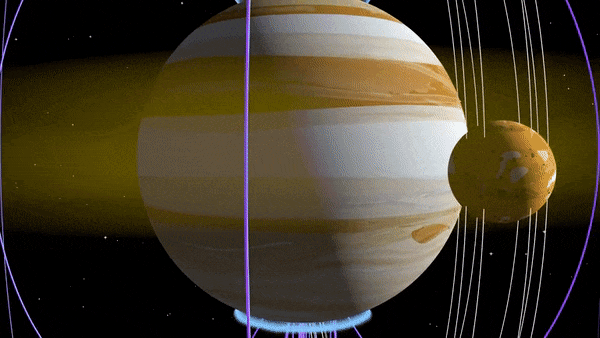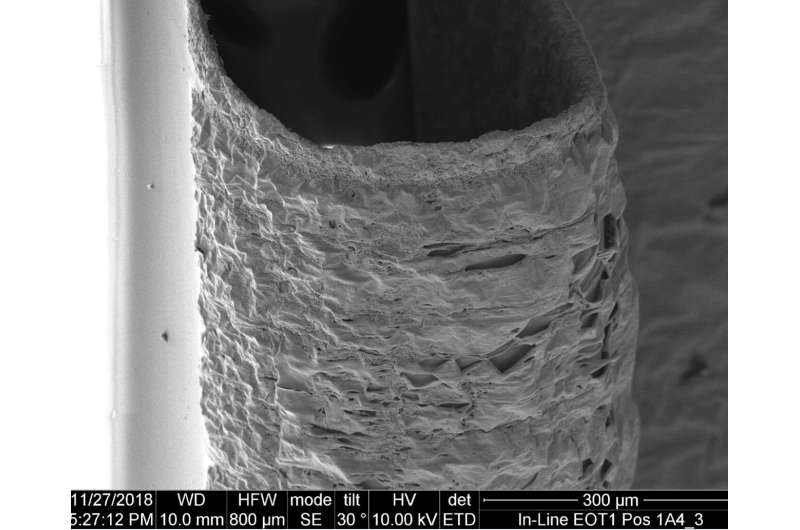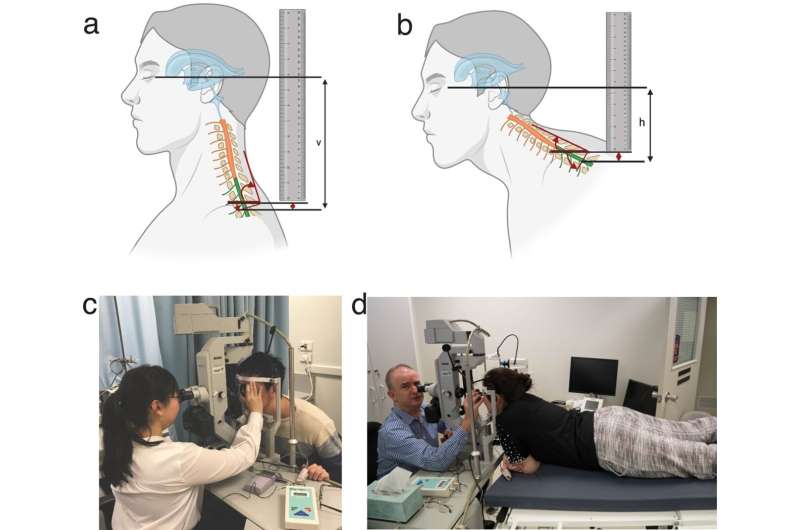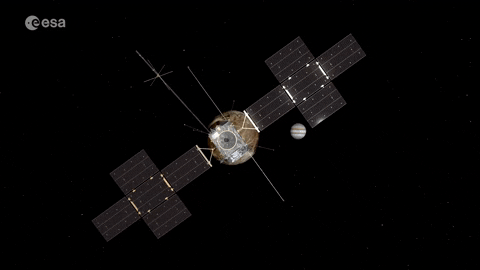
Copernical Team
Hubble unexpectedly finds double quasar in distant universe
 The early universe was a rambunctious place where galaxies often bumped into each other and even merged together. Using NASA's Hubble Space Telescope and other space and ground-based observatories, astronomers investigating these developments have made an unexpected and rare discovery: a pair of gravitationally bound quasars, both blazing away inside two merging galaxies. They existed when the u
The early universe was a rambunctious place where galaxies often bumped into each other and even merged together. Using NASA's Hubble Space Telescope and other space and ground-based observatories, astronomers investigating these developments have made an unexpected and rare discovery: a pair of gravitationally bound quasars, both blazing away inside two merging galaxies. They existed when the u New interactive mosaic uses NASA imagery to show Mars in vivid detail
 Both scientists and the public can navigate a new global image of the Red Planet that was made at Caltech using data from NASA's Mars Reconnaissance Orbiter.
Cliffsides, impact craters, and dust devil tracks are captured in mesmerizing detail in a new mosaic of the Red Planet composed of 110,000 images from NASA's Mars Reconnaissance Orbiter (MRO). Taken by the veteran spacecraft's black-a
Both scientists and the public can navigate a new global image of the Red Planet that was made at Caltech using data from NASA's Mars Reconnaissance Orbiter.
Cliffsides, impact craters, and dust devil tracks are captured in mesmerizing detail in a new mosaic of the Red Planet composed of 110,000 images from NASA's Mars Reconnaissance Orbiter (MRO). Taken by the veteran spacecraft's black-a Scoping out the next sampling stop for Perseverance
 After spending over 700 sols (Martian days) exploring the crater floor and delta front, Perseverance is making tracks up the front of the Jezero fan, climbing across stratigraphic layers, up and out of the ancient Jezero lakebed. This ascent begins the extended portion of the Mars 2020 mission, where Perseverance will continue on to the rim of Jezero Crater and beyond, collecting samples along t
After spending over 700 sols (Martian days) exploring the crater floor and delta front, Perseverance is making tracks up the front of the Jezero fan, climbing across stratigraphic layers, up and out of the ancient Jezero lakebed. This ascent begins the extended portion of the Mars 2020 mission, where Perseverance will continue on to the rim of Jezero Crater and beyond, collecting samples along t A new measurement could change our understanding of the Universe
 The Universe is expanding - but how fast exactly? The answer appears to depend on whether you estimate the cosmic expansion rate - referred to as the Hubble's constant, or H0 - based on the echo of the Big Bang (the cosmic microwave background, or CMB) or you measure H0 directly based on today's stars and galaxies. This problem, known as the Hubble tension, has puzzled astrophysicists and cosmol
The Universe is expanding - but how fast exactly? The answer appears to depend on whether you estimate the cosmic expansion rate - referred to as the Hubble's constant, or H0 - based on the echo of the Big Bang (the cosmic microwave background, or CMB) or you measure H0 directly based on today's stars and galaxies. This problem, known as the Hubble tension, has puzzled astrophysicists and cosmol NASA's Webb Scores Another Ringed World with New Image of Uranus
 The planet Uranus is an oddball in our solar system, tilted on its side as it orbits the sun, causing extreme seasons. While the planet's atmosphere appeared nearly featureless when visited by the Voyager 2 spacecraft in 1986, subsequent observations from the ground and in space have shown turbulent storms.
NASA's James Webb Space Telescope recently observed Uranus, and the resulting image
The planet Uranus is an oddball in our solar system, tilted on its side as it orbits the sun, causing extreme seasons. While the planet's atmosphere appeared nearly featureless when visited by the Voyager 2 spacecraft in 1986, subsequent observations from the ground and in space have shown turbulent storms.
NASA's James Webb Space Telescope recently observed Uranus, and the resulting image Europe’s biggest test chamber for space antennas takes shape

Antennas and radio frequency systems for space are growing larger and more powerful, so to keep pace ESA’s ground-based test facilities are scaling up too. A construction project underway beside the dunes of the North Sea marks the expansion of the ESTEC technical centre in the Netherlands with the addition of Europe’s largest antenna and radio-frequency payload test chamber – Hertz 2.0.
Jupiter’s radiation belts – and how to survive them

ESA’s Jupiter Icy Moons Explorer, Juice, is headed to the largest structure in the Solar System – not the gas giant itself but the mammoth magnetic field that it generates. Its exact size varies with the solar wind, but Jupiter’s magnetosphere is on average 20 million kilometres across, which is about 150 times wider than its parent planet and almost 15 times the diameter of the Sun. But within that field lurks a clear and present danger to space missions – intense belts of radiation much more energetic and intense than Earth’s own Van Allen belts.
Juice mission to Jupiter testing—down to the wire

Preparing the Juice mission to Jupiter has involved testing for all kinds of contingencies, down to the smallest of scales. This microscopic view shows surface damage to a tiny silver interconnector after being exposed to erosive atomic oxygen known to be found surrounding Jupiter's moon Ganymede.
Due to launch on April 13 to begin an eight-year journey to the largest planet in the solar system, ESA's Jupiter Icy Moons Explorer, Juice, will spend three and a half years in the Jupiter system, and in the final phase of its exploration will go into orbit around the largest Jovian moon, Ganymede.
However, previous observations by the Hubble Space Telescope have revealed auroral glows around Ganymede due to the presence of 'atomic oxygen'—individual atoms of oxygen at the fringes of the moon's scanty atmosphere, the result of standard oxygen molecules being broken apart by the powerful radiation belts surrounding Jupiter.
ESA materials engineer Adrian Tighe explains, "Atomic oxygen is also experienced in Earth orbit, due to oxygen molecules being dissociated by ultraviolet radiation from the Sun, and all Earth-orbiting missions below about 1000 km altitude are designed to resist it.
Improving astronaut vision in long-haul space flights

How Juice was made ready for Jupiter

Deciding to go to Jupiter was the easy part: it’s by far the largest planet around the Sun, resembling a Solar System in its own right with its many moons, three of which may well be home to hidden oceans beneath their icy surfaces. Then came the practical question: how do we actually put together a mission to go there? It was here that ESA’s Directorate of Technology, Engineering and Quality lent its support to the Juice team, tackling numerous technical challenges that threatened to bar Europe’s way to the king of planets.

